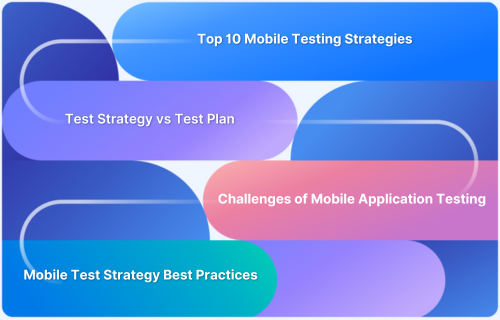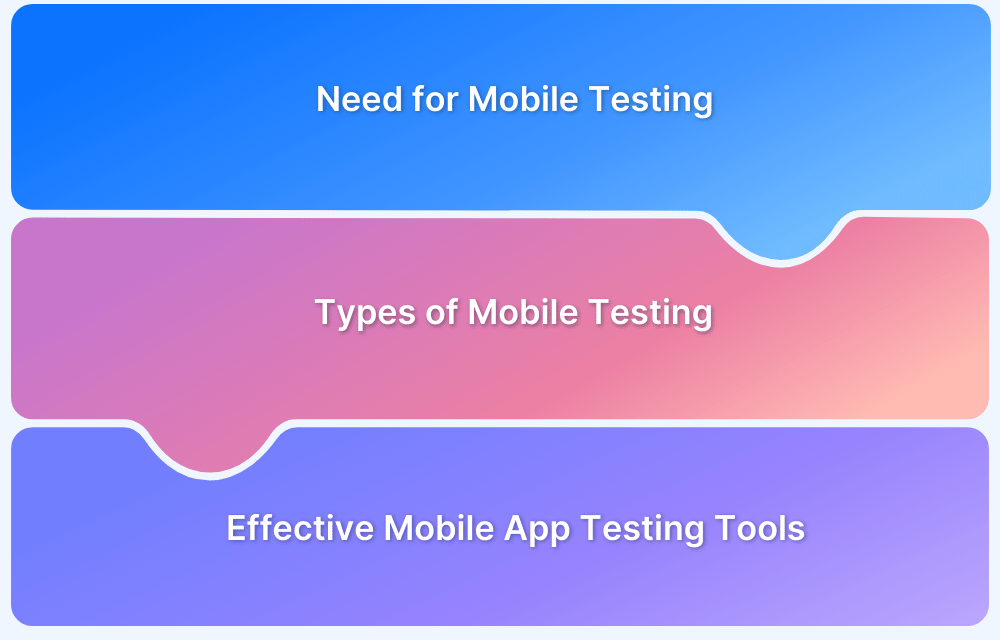A great team succeeds only when it has a shared vision and objective. Firstly, having a clear objective for your testing team is important. A tester should be curious and critique the product so that a better outcome is delivered to customers.
For instance, when testing a mobile app, you not only check whether the app opens but also its performance, collaboration with other apps, functionality as per the requirements, etc. The list can go on.
This article explores insights from the author’s personal experience on making the most out of a testing team.
How to Make the Most out of Your Testing Team
Maximizing your team’s potential demands a well-curated process that will help leverage skills and foster collaboration to streamline the delivery of high-quality software. Here are the steps to follow in order to make the most out of your testing team:
Steps to Make the Most out of Your Testing Team:
- Set Clear Goals and Expectations
- Clear Leadership Approach
- Cultural Transformation
- Clear Metrics For Success
- Career Progression Frameworks
- Provide feedback and recognition
Step 1: Set Clear Goals and Expectations
Make sure that you establish clear and realistic goals and expectations for each testing project. This is a crucual step to enhance your team’s productivity.
- Communicate the scope, timeline, budget, quality standards, deliverables, and more to your team.
- Define the roles and responsibilities of your team members.Assess the skills and preferences of your team members and accordingly assign tasks.
- Ensure that you update your team about the latest developments so that everyone is on the same page and any confusion or conflicts are avoided.
Step 2: Clear Leadership Approach
Poor-performing teams are not so because team members are poorly skilled. Rather they are poorly performing in most cases as they lack direction.
From experience, I was tasked with improving the performance output of an already established team. We had daily incidents, customers constantly complained, and delivery was consistently delayed.
The first thing I did was to see what guide rails were being put in place. Some key guide rails that I added:
- Testing strategy – this relates to the technology strategy and says what we are testing, why we are testing it, and what the key deliverables are.
- Testing approach – this would have been listed in the testing strategy as a key deliverable. This is a breakdown of the testing phases, what each entails, the entry and exit criteria for the phase, and what data is being tracked.
- Test exit report – this is referenced via the testing approach, though it would be a key deliverable before we can go live. This will detail the confidence levels regarding whether we can go live.
Step 3: Cultural Transformation
From experience, a testing team will do their best work when they are happy. A happy workforce has been scientifically proven to deliver a successful outcome.
One way that I have improved the culture is first to ascertain what the level of happiness in the team is and what it is that may be making the team unhappy.
For example, a team I worked with was unhappy as they had too much work and they had to constantly rush. This meant they were missing bugs in the product, which ultimately became escaped defects.
In this case, we worked with our scrum masters to improve the estimation process and found that the team’s happiness improved, along with the Quality of our product.
Values are also important to ensure that behaviors in the team are accepted and behaviors that may negatively impact the work output can be removed.
Some values that we agreed on as a team that helped us to collaborate:
- Put the ‘Assurance’ back into ‘Quality Assurance.’
- Ensure that we can deploy faster with HIGH Quality.
- Ensure all our teams care about Quality.
- Transparent QA and reporting of value.
- Prevent bugs, don’t just find them.
- Automate repeatable tasks and make them part of the CI/CD pipeline.
- Automate repetitive tasks – not just for the sake of it.
Read More: Top 10 Skills of a Proficient QA Manager
Step 4: Clear Metrics For Success
Having clear metrics for success in your team will mean that the leader and team members are in unison on what ‘great’ looks like. Far too often, one person’s view of success differs from others. For this reason, agreeing on metrics that deem success means we are all working from the same sheet.
Some metrics that I have found useful for quality delivery include: tracking the level of defects found before a release goes live, then the level of escaped defects that impact our customers. For a successful delivery, I would expect the level of escaped defects to be low and the level of pre-release defects to fluctuate. Though I would expect the level of pre-release defects found to go down over time should the efficiency of our engineering team increase.
Step 5: Career Progression Frameworks
A happy and performant team is one which is growing, and personal goals are aligned with team success.
In the past, I have found that team performance is less consistent when employees do not know what they need to develop to move to the next level.
For this reason, I made sure that there was a clear career progression framework that could be discussed on a weekly basis between leader and employee. This meant that the employee was in charge of their development and could push to get to the next level.
This approach ultimately made for a happier and more performant team.
Step 6: Provide feedback and recognition
Ensure you provide regular and constructive feedback to your team members. It is also important to acknowledge their work and give them recognition. Feedback helps the team members recognize their strengths and weaknesses, helping them learn and improve their performance. Recognition, on the other hand, makes your team members feel valued and encourages them to work productively. Ensure you provide feedback and recognition to your team members at regular intervals and carry out the process in a positive manner.
Conclusion
In conclusion, it is the leader’s job to ensure they are getting the best out of their team. With the focus on a clear leadership approach; cultural transformation; clear metrics for success, and a career progression framework – there is a higher chance that your team can continue to thrive and give your customers a great quality output.







